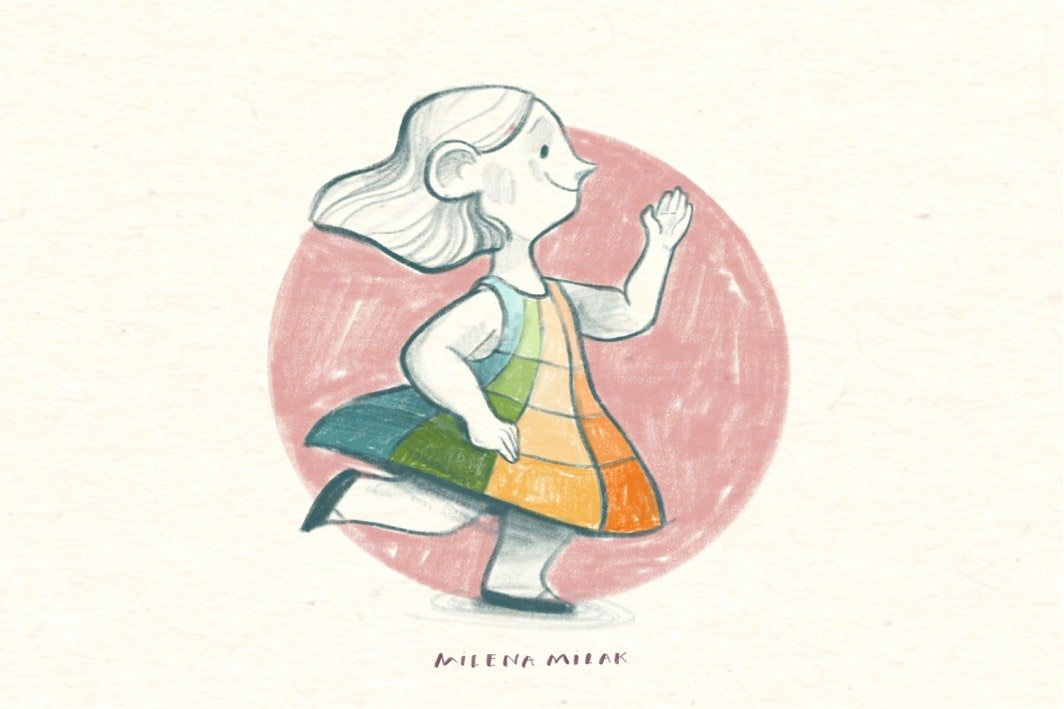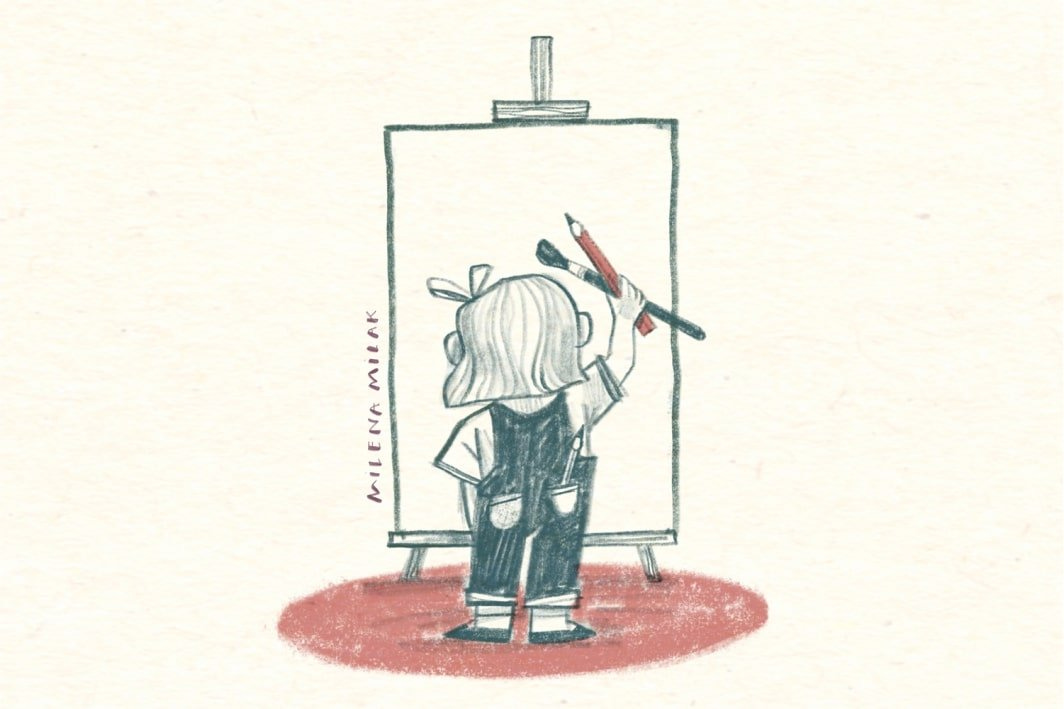6 Tips on how to draw children’s book illustrations (plus resources)
I’m a self-taught artist who decided to dive into the world of illustrating children’s books.
If you're reading this, chances are you're either already on your own illustration journey or thinking about joining the world of children's book illustration yourself.
I’ve learned a lot along the way, and I want to share some of the insights that have helped me grow as an illustrator. Here are my top six children's book illustration tips to help you become a better illustrator.
1. Learn the art fundamentals
One of the most important things is consistent practice. I’m sorry if this sounds a little blunt, but that's the price you pay if you want to become an artist. Unfortunately, there are no shortcuts. It takes hours (and many moments of self-doubt) to learn the craft.
Even though your interest may lie in stylized, cute children’s book illustrations, you still need a strong foundation. Learning about composition, color theory, and human anatomy is essential. It may seem boring and tedious, but trust me, doing lots of art studies will pay off. I write more about this topic here.
Learn the basics of anatomy and gesture drawing so your characters are more dynamic. Dive into color theory and color psychology to tell a better story with your artwork. Study light to build the right mood. And once you’ve mastered the technical basics, start doing master studies. Look at your favorite artists' work and try replicating it.
What choices did they make when stylizing their work?
Why did they choose this composition over another?
Resources:
Proko – a great source for those who enjoy learning through videos. Excellent selection and great teachers.
Anatomy for Artists: Visual guide to the human form by 3D Publishing – a great book focused on human anatomy.
6 Time-Tested Ways to Create Visual Paths of Interest in Your Paintings.
Framed Ink: Drawing and Composition for Visual Storytellers – an absolute must for understanding visual storytelling through composition.
2. Understand the use of color in illustration
It’s easy to get caught up in using a color palette that you personally love. I’m guilty of that. When I first started building my portfolio, most of my artwork was blue. I loved having a signature color palette and seeing my Instagram feed looking all coherent and aesthetically pleasing. But soon, I realized that this color palette was limiting my options. I wrote more about it here.
Color can say so much in an illustration, and it’s a tool you need to learn how to use. It’s not just about matching colors to achieve harmony; it’s also about understanding the psychology of color.
How does color affect the reader?
What does it say about the scene?
Are you going for a happy, light mood, or do you want to evoke anguish, fear, or sadness?
Resources:
Lighting Mentor– short yet packed with groundbreaking knowledge. I highly recommend all his videos.
Color Harmony by Florent Farges Art – a great intro to understanding color harmony.
Color and Light - A Guide for the Realist Painter by James Gurney: A fantastic book I keep coming back to, recommended by many artists.
3. Discover why storytelling is important
What is an illustration? Illustration is not just a pretty picture. Illustrations tells a story. I write more about storytelling in illustration here
A great exercise is to analyze your illustration and ask yourself:
“Does it work without text? Is the context clear enough? Do the character’s body language and facial expressions convey enough emotion? Does the color palette set the right mood? What does the character’s clothing say about who they are?”
This is the first impression a viewer will get.
Also, readers, especially children, love to “read” your illustration. They’ll look for clues, hidden elements, and find joy in discovering these little details. If you’re working on a forest scene, why not add some secondary hidden characters, like a squirrel hoarding nuts or a bear munching on honey? If you’re illustrating a room, add funny paintings on the wall (that’s a personal favorite of mine) or use the room’s interior to reveal something about the character’s personality.
Resources:
SVSLearn – an online school with a community and great teachers
The Art of Storytelling by John Walsh: An introduction to storytelling.
How to Tell Stories through Illustrations with Djamila Knopf: A fantastic talk by Djamila Knopf at LightBox Expo
4. Take the sketching and discovery process seriously
If you don’t have a clear, detailed vision of what your illustration is about, never just jump into the rendering process. Focus on rough, loose sketches. Always start simply by roughing out the concept of the illustration. What’s the story? Is there a key character, a dominant mood, or an overarching emotion? What are they doing? Try out various compositions. Search for emotion through gesture drawing of your characters.
Don’t be afraid to make it look ugly! Don’t let perfectionism stop you from creating lots of sketches. They’ll help clear the path and are invaluable in polishing your idea.
Resources:
Sketching Scottie - Teaches how to pick up the skill of quick, loose sketches.
The Art of Urban Sketching book – great for beginners, not just for urban sketching.
5. Don’t be afraid to start again. And again.
This is probably the toughest part of the learning process. But sometimes, we need to let go of artwork that doesn’t work. You might want to keep fixing it, and while that can help improve your technique, it can also lead to burnout when nothing seems good enough anymore.
Don’t be afraid to put it away and start fresh. I’m not saying to throw it away. Sometimes there are good solutions hidden in that piece. But put it out of sight and start a new one. Sometimes, that’s the only way to move forward.
6. Don’t stay isolated. Find your art community.
When thinking about how to make a good illustration portfolio, remember it’s important to get feedback. Find a critique group, either online or in person. Show your work to strangers on social media, forums, or Discord channels.
But never, ever rely on what your friends and family tell you. First, because more often than not, they’ll try to encourage you and avoid telling you the painful truth. Second, they might not have the technical knowledge to evaluate your illustration properly.
It might look “pretty” to them, but “pretty” isn’t enough to create a great piece.
Put yourself out there and seek constructive feedback. If you can afford it, get a portfolio review from a professional working in the field. I can’t tell you how helpful this was for me.
Where do you look when you’re searching for resources to learn? And what are your most valuable discoveries?
Until next time!
Mila











All this info is sooo valuable, thank you so much for sharing <3
Very good tips, Milena! Thank you for sharing 😌